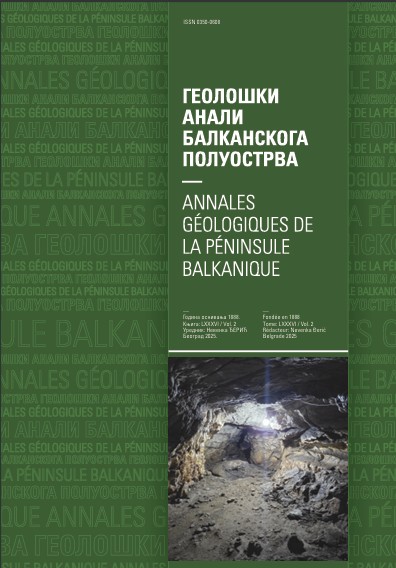Radiolarian assemblage from radiolarites of the Krš Gradac section (SW Serbia): on the way to a better reconstruction of the Middle-Late Jurassic geodynamic history of the Inner Dinarides
Abstract
The type section of the Gonje Formation (Krš Gradac, Sjenica area) is characterized by an abundance of radiolarian tests, which, however, are generally recrystallized and poorly preserved. This paper focuses on the age of radiolarite sequence below the series with intercalated turbidites and mass transport deposits. The Callovian/Oxfordian (?early Oxfordian) moderately preserved radiolarian assemblage was determined from the higher part of the radiolaritic sequence without mass transport deposits. The new biostratigraphic age is consistent with the previously published data of the authors and reveals that the radiolaritic sequence without mass transport deposits of the Gonje Formation was deposited between the Bathonian and Oxfordian. The biostratigraphic age of this part of the Gonje Formation evidence that the Ljubiš Basin underwent in Late Oxfordian to earliest Tithonian times a phase of starvation with reduced sediment supply or production. The reasons for this starvation are discussed.
Copyright (c) 2023 Geološki anali Balkanskoga poluostrva

This work is licensed under a Creative Commons Attribution 4.0 International License.










